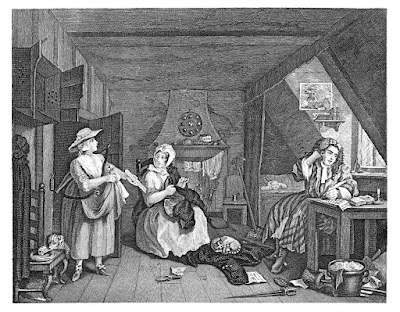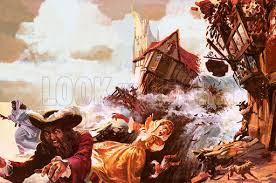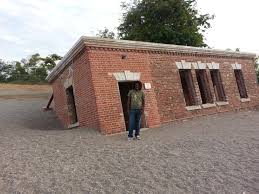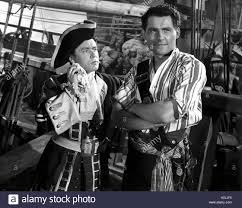The image of a pirate haunt – or pirate nest, as they were
sometimes called by royal authorities and customs officials, calls up images of
violence, debauchery and decay. After all, who would let pirates wander freely
around their town, among their wives and children?
Well, as it turns out, a lot of people would. Pirate “nests”
included Charleston, Philadelphia, New Jersey, New York City, Newport, and
Boston. These were towns where a pirate ship could go through the charade of
stowing the Jolly Roger, breaking out a more acceptable flag, and sailing
grandly into port.
 |
| Philadelphia, Pirate Nest. |
But questions were seldom asked. When good are being sold at
half, perhaps a third, of their actual value, why ask? Everyone knew the sellers
were pirates, after all. And those that played along made a handsome profit.
 |
| Boston Harbor |
 |
| Most Englishmen were okay with robbing this guy |
When the better-prepared pirates wanted to leave the life,
they might settle down in such a place. The Governor Eden of North Carolina
issued the King’s pardon to Blackbeard, then helped him to set up a suitable
house. Local rumors said that the newly pardoned pirate married a local girl –
though there is no proof.
 |
| The man who signed Blackbeard's pardon/ |
When pirates bought property, and married into prominent
local families, it was natural that communities would rally around a pirate who
was under attack or suspicion from the authorities.
Jailbreaks and riots organized in support of alleged pirates
happened throughout the British Empire during the late seventeenth century.
Local political leaders openly protected men who committed acts of piracy
against powers that were nominally allied or at peace with England. In large
part, these leaders were protecting their own hides: Colonists wanted to
prevent depositions proving that they had harbored pirates or purchased their
goods. Some of the instigators were fathers-in-law of pirates.
 |
| Riot in progress! |
Governor Andrew Hamilton and his entourage rushed to
Monmouth County Court to try Butterworth for his crimes.
But Samuel Willet, a community leader, sent a drummer to
sound the alarm. Thomas Johnson gathered a company of men who, armed with guns
and clubs, attacked the courthouse. A contemporary estimated the crowd at over
a hundred East Jersey residents. The noise of shouting men, along with the
“Drum beating,” made it impossible to speak to Butterworth. No one was able to
ask him about his financial and social relationships with the local gentry.
After a scuffle in which two townsfolk were injured, the
so-called pirate was freed and the Governor, a sheriff and judge were locked up in his place. When
the judge and his people were finally released they confessed that they had
feared for their lives.
 |
| Governor Andrew Hamilton |
But these otherwise upstanding members of the community
rebelled in support of sea marauders. Many colonists were afraid that
crack-downs on piracy hid darker intentions to strengthen royal authority, or perhaps
set up admiralty courts (which operated without juries,) or even force free-thinking
colonials to join the Anglican Church.
So protecting pirates was a social, economic and political
statement.

































